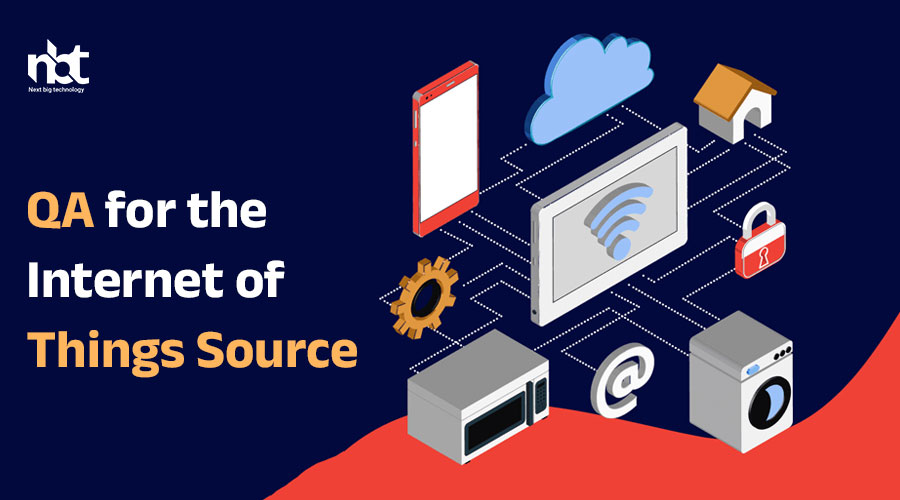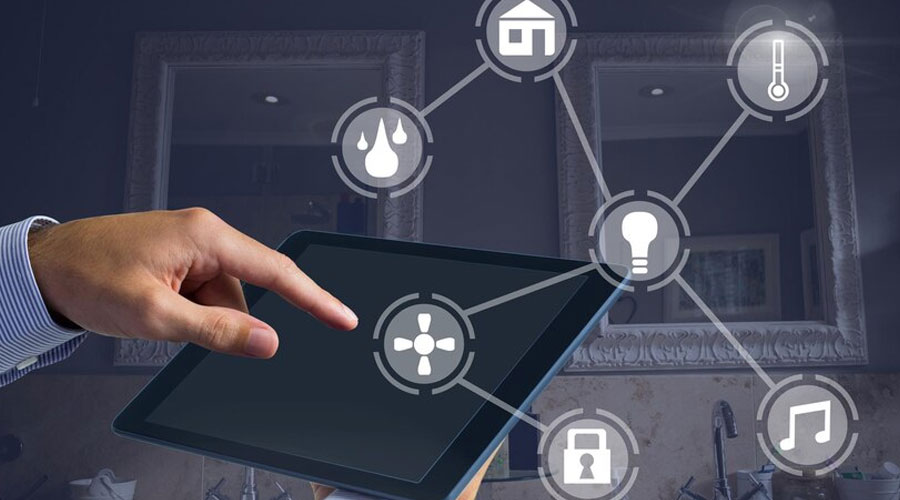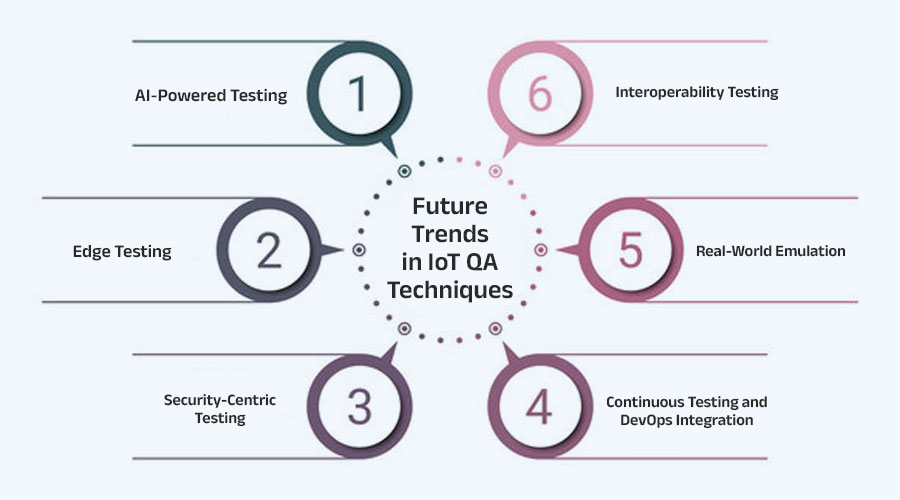Table of Contents
Understanding the Internet of Things (IoT)
In today’s digitally interconnected world, the term “Internet of Things” (IoT) has become increasingly prevalent. From smart homes to industrial automation, IoT is revolutionizing the way we live and work. But what exactly is the Internet of Things, and why is it so important? Let’s delve into the depths of this transformative technology to understand its significance.
At its core, the Internet of Things refers to the network of physical objects embedded with sensors, software, and other technologies, enabling them to connect and exchange data with other devices and systems over the internet. These objects can range from everyday consumer devices like smart thermostats and wearable fitness trackers to complex industrial machinery and urban infrastructure.
One of the key principles of IoT is connectivity. By seamlessly integrating devices and systems, IoT facilitates communication and collaboration on a scale never seen before. This interconnectedness enables a myriad of applications across various domains, including healthcare, transportation, agriculture, manufacturing, and more.
In healthcare, for instance, IoT devices such as remote patient monitoring systems and smart medical devices can collect real-time health data, allowing healthcare professionals to monitor patients’ conditions remotely and provide timely interventions. Similarly, in agriculture, IoT sensors can monitor soil moisture levels, weather conditions, and crop health, enabling farmers to optimize irrigation, minimize water usage, and increase crop yields.
Moreover, IoT plays a pivotal role in shaping smart cities and improving urban living. By deploying IoT-enabled infrastructure such as smart streetlights, traffic management systems, and waste management solutions, cities can enhance efficiency, reduce resource consumption, and improve the overall quality of life for residents.
However, with great connectivity comes great concerns, particularly regarding privacy and security. The vast amount of data generated by IoT devices raises significant privacy issues, as sensitive information about individuals and organizations is collected, transmitted, and stored. Furthermore, IoT devices are susceptible to cyberattacks and breaches, posing serious security risks to both individuals and businesses.
To address these challenges, robust security measures, such as encryption, authentication, and access control, must be implemented across IoT ecosystems. Additionally, privacy regulations and standards should be established to govern the collection, use, and sharing of IoT data, ensuring transparency and accountability.
Despite these challenges, the potential benefits of IoT are immense. By harnessing the power of connectivity and data analytics, IoT has the capacity to revolutionize industries, optimize processes, and enhance quality of life. As we continue to advance technologically, it is imperative that we embrace IoT responsibly, striving to maximize its benefits while mitigating its risks.
Importance of Quality Assurance (QA) in IoT
In the dynamic landscape of technology, where innovation reigns supreme, the Internet of Things (IoT) stands tall as a groundbreaking force. It has transformed the way we interact with devices, bridging the physical and digital realms seamlessly. However, amidst this wave of advancement, the importance of Quality Assurance (QA) in IoT cannot be overstated. It serves as the cornerstone of ensuring reliability, functionality, and security in this interconnected ecosystem.
The Significance of Quality Assurance in IoT
- Reliability Enhancement: Quality Assurance in IoT plays a pivotal role in enhancing the reliability of interconnected devices. By subjecting IoT devices and systems to rigorous testing protocols, QA ensures that they perform consistently under varying conditions. Whether it’s monitoring sensors, smart appliances, or industrial equipment, reliability is paramount to maintain seamless operations.
- Functionality Optimization: IoT encompasses a myriad of applications across diverse sectors, ranging from healthcare and agriculture to smart cities and manufacturing. Each of these applications demands tailored functionalities to cater to specific requirements. QA processes delve deep into understanding these functionalities and ensure that IoT solutions deliver optimal performance, meeting the needs of end-users effectively.
- Security Assurance: With the proliferation of connected devices, the security of IoT ecosystems emerges as a critical concern. Quality Assurance practices encompass robust security testing methodologies to identify vulnerabilities and loopholes in IoT systems. By proactively addressing security threats, QA safeguards sensitive data, mitigates risks of cyber-attacks, and fosters trust among users.
- Interoperability and Compatibility: In the vast IoT landscape, devices and platforms from different manufacturers must seamlessly communicate and operate together. QA protocols focus on ensuring interoperability and compatibility across diverse hardware and software components. This interoperability ensures that IoT solutions remain flexible, scalable, and future-proof, accommodating evolving technological advancements.
- Compliance and Standards Adherence: IoT deployments are often subject to regulatory requirements and industry standards to uphold data privacy, safety, and environmental regulations. Quality Assurance practices ensure that IoT solutions comply with these standards and regulations. By adhering to established guidelines, QA fosters trust among stakeholders and eliminates potential legal pitfalls.
The Role of QA in IoT Development Lifecycle
Quality Assurance is not an afterthought in IoT development but an integral part of the entire lifecycle. From conceptualization and design to deployment and maintenance, QA processes are woven seamlessly into every phase, ensuring a holistic approach to quality management.
- Requirements Analysis: QA experts collaborate closely with stakeholders to gather and analyze requirements, ensuring clarity and alignment with business objectives. This proactive approach lays the foundation for designing robust IoT solutions that meet stakeholders’ expectations.
- Design and Development: During the design and development phase, QA teams conduct comprehensive reviews and assessments to validate architecture, protocols, and algorithms. By identifying potential issues early in the development cycle, QA minimizes rework, accelerates time-to-market, and enhances overall product quality.
- Testing and Validation: Rigorous testing forms the crux of QA in IoT development. It encompasses functional testing, performance testing, security testing, and more, to validate the reliability, functionality, and security of IoT solutions across diverse scenarios and use cases.
- Deployment and Maintenance: Even after deployment, QA remains instrumental in ensuring the smooth operation of IoT ecosystems. Continuous monitoring, performance tuning, and security updates are essential aspects of QA-driven maintenance practices, ensuring sustained reliability and performance.
Challenges in QA for IoT Devices
In the rapidly evolving landscape of technology, the Internet of Things (IoT) stands out as a game-changer, promising a future where everyday objects are interconnected, seamlessly communicating to enhance efficiency and convenience. However, this interconnectedness also brings forth a myriad of challenges, particularly in ensuring the quality and reliability of IoT devices. As the IoT ecosystem continues to expand, so do the challenges in quality assurance (QA). Let’s delve into some of the prominent hurdles faced by QA teams in ensuring the effectiveness and security of IoT devices.
- Diverse Ecosystems and Standards: One of the primary challenges in QA for IoT devices is the sheer diversity of ecosystems and standards. Unlike traditional software or hardware products, IoT devices often operate in heterogeneous environments, involving various communication protocols, operating systems, and hardware configurations. Ensuring compatibility and interoperability across this diverse landscape requires meticulous testing across different platforms and environments.
- Security Vulnerabilities: Security remains a paramount concern in the realm of IoT devices. With a multitude of entry points and potential vulnerabilities, ensuring robust security measures is a daunting task for QA teams. From encryption protocols to authentication mechanisms, every aspect of IoT devices needs to undergo rigorous testing to identify and mitigate security risks. Moreover, the proliferation of connected devices increases the attack surface, making it imperative to stay ahead of emerging threats through proactive security testing.
- Complexity of Connectivity: IoT devices rely heavily on seamless connectivity to function effectively. However, ensuring consistent connectivity poses a significant challenge for QA teams. Factors such as network latency, bandwidth limitations, and intermittent connectivity in remote or constrained environments can impact the performance of IoT devices. Comprehensive testing methodologies, including stress testing and real-world scenario simulations, are essential to assess the resilience of IoT devices under varying network conditions.
- Data Privacy and Compliance: As IoT devices collect and transmit vast amounts of data, ensuring data privacy and regulatory compliance becomes a critical concern. QA teams must ascertain that IoT devices adhere to stringent data protection regulations and industry standards. This involves evaluating data encryption methods, user consent mechanisms, and adherence to privacy regulations such as GDPR and CCPA. Furthermore, continuous monitoring and auditing are essential to mitigate potential data breaches and ensure compliance throughout the product lifecycle.
- Lifecycle Management: The lifecycle management of IoT devices presents a unique set of challenges for QA teams. From firmware updates to patch management, maintaining the integrity and functionality of IoT devices requires meticulous planning and execution. QA teams need to establish robust processes for version control, remote updates, and backward compatibility testing to ensure a seamless transition across different stages of the device lifecycle.
Testing Strategies for IoT Applications
In the realm of the Internet of Things (IoT), where devices of all shapes and sizes interconnect to form a complex web of functionality, testing strategies play a pivotal role in ensuring seamless performance and reliability. With the proliferation of IoT applications across various domains like healthcare, smart homes, industrial automation, and beyond, the need for robust testing methodologies has become more pronounced than ever. Let’s delve into some effective testing strategies tailored specifically for IoT applications.
- Embrace a Comprehensive Approach: IoT ecosystems are multifaceted, comprising hardware, software, networks, and interfaces. A holistic testing approach should encompass all these layers, evaluating not only individual components but also their interactions within the larger system. This involves testing device functionality, communication protocols, data integrity, and security features.
- Functional Testing: Begin by validating the core functionalities of IoT devices. Test various scenarios to ensure that sensors, actuators, and other components perform as expected under normal operating conditions. Additionally, simulate edge cases and boundary conditions to uncover potential vulnerabilities and ensure robustness.
- Interoperability Testing: IoT devices often need to communicate with each other and with external systems. Interoperability testing verifies seamless data exchange between heterogeneous devices and platforms, ensuring compatibility across different protocols, standards, and manufacturers. This includes testing interoperability with common IoT frameworks and cloud platforms.
- Performance Testing: IoT applications must deliver real-time responsiveness and handle varying loads efficiently. Performance testing evaluates system scalability, responsiveness, and throughput under different usage scenarios. This involves stress testing to determine system limits, load testing to simulate realistic usage patterns, and latency testing to measure response times.
- Security Testing: Security is a paramount concern in IoT applications due to the proliferation of connected devices and the potential risks associated with data breaches and cyber-attacks. Security testing involves identifying vulnerabilities such as weak authentication mechanisms, insecure data transmission, and susceptibility to tampering. Employ techniques like penetration testing, vulnerability scanning, and encryption analysis to fortify the system against potential threats.
- Usability Testing: User experience (UX) is a critical aspect of IoT applications, particularly in consumer-facing domains like smart homes and wearable devices. Usability testing evaluates the intuitiveness, accessibility, and overall user-friendliness of the interface. Gather feedback from target users through surveys, interviews, and usability tests to iterate and refine the user experience.
- Edge and Cloud Testing: Many IoT applications leverage edge computing and cloud services to process data closer to the source and offload computational tasks. Test the reliability and performance of edge devices, edge analytics algorithms, and cloud services to ensure seamless integration and optimal resource utilization.
- Data Integrity and Analytics Testing: IoT applications generate vast amounts of data, which are often used for real-time analytics, predictive maintenance, and decision-making. Validate data integrity throughout the data lifecycle, from collection and transmission to storage and processing. Additionally, test analytics algorithms to ensure accurate insights and actionable intelligence.
- Regression Testing: As IoT applications evolve with updates and new features, regression testing becomes crucial to maintain the integrity of existing functionalities. Automate regression tests to quickly validate the impact of changes and updates on the overall system behavior, ensuring backward compatibility and stability.
- Continuous Testing and DevOps Integration: Adopt a continuous testing approach integrated with DevOps practices to streamline the testing process and accelerate time-to-market. Automate test execution, leverage infrastructure-as-code for test environments, and implement continuous integration and deployment (CI/CD) pipelines for seamless integration and delivery of updates.
Compatibility Testing across IoT Ecosystems
In today’s rapidly evolving technological landscape, the Internet of Things (IoT) stands out as a transformative force, promising seamless connectivity and automation across various domains. However, amidst this proliferation of IoT devices and platforms, ensuring compatibility has emerged as a critical challenge. Compatibility testing across IoT ecosystems has become indispensable to guarantee interoperability, reliability, and security. In this comprehensive guide, we delve into the intricacies of compatibility testing and explore strategies to master it effectively.
Understanding IoT Ecosystems
IoT ecosystems encompass a vast array of interconnected devices, sensors, networks, and applications designed to collect, exchange, and act upon data. These ecosystems span diverse industries, including healthcare, manufacturing, smart homes, agriculture, and transportation. Within these ecosystems, compatibility refers to the ability of different components to communicate, interact, and function seamlessly together.
The Significance of Compatibility Testing
Compatibility testing plays a pivotal role in ensuring the seamless operation of IoT ecosystems. It involves evaluating the compatibility of various components such as hardware devices, communication protocols, operating systems, and applications. By conducting rigorous compatibility testing, organizations can:
- Ensure Interoperability: Compatibility testing verifies that devices and software from different vendors can communicate effectively, exchange data, and perform intended functions without errors or disruptions.
- Enhance Reliability: By identifying and resolving compatibility issues early in the development cycle, organizations can improve the reliability and performance of IoT solutions, minimizing downtime and enhancing user experience.
- Mitigate Security Risks: Compatibility testing helps uncover vulnerabilities and security loopholes that may arise due to interoperability issues or integration challenges, enabling organizations to implement robust security measures.
Key Challenges in Compatibility Testing
Despite its importance, compatibility testing across IoT ecosystems presents several challenges, including:
- Diverse Technologies: IoT ecosystems comprise diverse technologies, standards, and protocols, making compatibility testing complex and multifaceted.
- Scalability: With the proliferation of IoT devices and platforms, scalability becomes a significant challenge, necessitating efficient testing methodologies and tools.
- Dynamic Environment: IoT environments are dynamic, with frequent updates, patches, and new releases, requiring continuous testing and validation to ensure compatibility across versions.
Strategies for Mastering Compatibility Testing
To overcome the challenges associated with compatibility testing across IoT ecosystems, organizations can adopt the following strategies:
- Comprehensive Test Planning: Develop a comprehensive test plan that encompasses all aspects of compatibility testing, including device compatibility, protocol compatibility, interface compatibility, and interoperability testing.
- Use of Simulation and Emulation: Utilize simulation and emulation techniques to replicate real-world IoT scenarios, enabling thorough testing in a controlled environment without the need for physical devices.
- Automation: Leverage automation tools and frameworks to streamline compatibility testing, accelerate test execution, and improve test coverage, thereby enhancing efficiency and reducing time-to-market.
- Continuous Integration and Testing: Implement continuous integration and testing practices to facilitate early detection and resolution of compatibility issues throughout the development lifecycle, ensuring robustness and reliability.
- Collaboration and Standardization: Foster collaboration among stakeholders, industry consortia, and standardization bodies to establish common standards, protocols, and best practices for interoperability and compatibility testing.
Security Testing in IoT Environments
In today’s digitally driven world, the Internet of Things (IoT) has revolutionized the way we interact with technology. From smart homes to industrial automation, IoT devices have become ubiquitous, promising convenience, efficiency, and innovation. However, with this connectivity comes a significant concern: security vulnerabilities. Ensuring the integrity and safety of IoT environments is paramount, making security testing an indispensable practice.
Understanding IoT Security Challenges: IoT devices, ranging from sensors and actuators to wearable gadgets, often operate in complex ecosystems with diverse communication protocols and interfaces. This complexity introduces various security challenges, including:
- Weak Authentication Mechanisms: Many IoT devices utilize default or weak credentials, making them susceptible to unauthorized access.
- Data Privacy Risks: IoT devices collect and transmit vast amounts of sensitive data, raising concerns about privacy breaches and data misuse.
- Firmware and Software Vulnerabilities: Outdated firmware and unpatched software can leave devices vulnerable to exploitation by cybercriminals.
- Physical Security Threats: Physical access to IoT devices can compromise their security, leading to tampering or theft of sensitive information.
The Role of Security Testing: Security testing plays a pivotal role in identifying and mitigating these vulnerabilities within IoT ecosystems. It involves a comprehensive assessment of the system’s security posture, encompassing various methodologies and techniques such as:
- Penetration Testing: Also known as ethical hacking, penetration testing simulates real-world cyber attacks to identify vulnerabilities in IoT devices, networks, and applications. By exploiting these vulnerabilities, security professionals can assess the system’s resilience to attacks and recommend remedial measures.
- Vulnerability Scanning: Automated tools are used to scan IoT devices and networks for known vulnerabilities, misconfigurations, and weaknesses. This proactive approach enables organizations to identify and address security gaps before they are exploited by malicious actors.
- Security Code Review: Manual inspection of the source code helps identify potential security flaws and weaknesses in IoT device firmware and software. By analyzing the code for common security vulnerabilities such as buffer overflows, injection flaws, and insecure authentication mechanisms, developers can implement robust security controls and best practices.
- Security Configuration Reviews: Assessing the configuration settings of IoT devices, networks, and cloud services is crucial for identifying misconfigurations that could expose them to security risks. By ensuring that devices are properly configured and hardened, organizations can mitigate the risk of unauthorized access and data breaches.
- Protocol Analysis: Analyzing the communication protocols used by IoT devices helps identify vulnerabilities such as insecure encryption, message tampering, and replay attacks. By scrutinizing the data traffic between devices and backend systems, security professionals can detect anomalies and enforce secure communication channels.
Best Practices for Security Testing in IoT Environments: To effectively safeguard IoT ecosystems against evolving threats, organizations should adopt the following best practices for security testing:
- Continuous Testing: Security testing should be integrated into the development lifecycle of IoT devices and applications, ensuring that security vulnerabilities are identified and addressed early in the process.
- Threat Modeling: Conducting threat modeling exercises helps identify potential security threats and prioritize security controls based on their impact and likelihood. By understanding the threat landscape, organizations can focus their security testing efforts on areas of highest risk.
- Security Awareness Training: Educating developers, engineers, and end-users about IoT security best practices and common attack vectors is essential for building a security-conscious culture. By promoting security awareness, organizations can mitigate the human factor in security breaches and improve overall resilience.
- Third-Party Security Assessment: Engaging third-party security experts to conduct independent security assessments and audits can provide valuable insights and validation of the effectiveness of security controls implemented within IoT environments.
Performance Testing for IoT Devices and Networks
In the rapidly evolving landscape of technology, the Internet of Things (IoT) has emerged as a revolutionary force, connecting devices and systems to enhance efficiency, productivity, and convenience. However, with this interconnectedness comes the crucial need for reliable performance testing to ensure seamless operation and optimal functionality of IoT devices and networks. In this guide, we delve into the significance of performance testing for IoT and offer insights into best practices for maximizing efficiency.
Understanding Performance Testing for IoT
Performance testing for IoT devices and networks involves evaluating their ability to handle various tasks and scenarios under normal and peak conditions. It encompasses assessing factors such as responsiveness, reliability, scalability, and resource usage. With the diverse range of devices and network protocols in IoT ecosystems, thorough testing becomes essential to identify potential bottlenecks, vulnerabilities, and areas for improvement.
Importance of Performance Testing
- Reliability Assurance: Performance testing validates the reliability of IoT devices and networks by simulating real-world conditions and workload scenarios. It helps identify and rectify issues related to latency, connectivity, and data transmission, ensuring consistent performance.
- Optimized Resource Utilization: By analyzing resource utilization patterns during testing, organizations can optimize the allocation of resources such as bandwidth, memory, and processing power, thereby enhancing efficiency and reducing operational costs.
- Enhanced User Experience: Performance testing plays a pivotal role in enhancing the overall user experience by ensuring that IoT applications respond promptly to user inputs and deliver seamless functionality, thereby fostering user satisfaction and loyalty.
- Scalability Assessment: IoT ecosystems often need to accommodate a growing number of devices and users. Performance testing facilitates scalability assessment, enabling organizations to determine the system’s ability to handle increasing loads without compromising performance.
Best Practices for Performance Testing
- Define Clear Objectives: Establish specific goals and performance metrics for testing, such as response time, throughput, and error rates, to effectively measure the performance of IoT devices and networks.
- Simulate Real-World Scenarios: Replicate real-world usage scenarios and workload conditions during testing to accurately assess the performance under diverse environments, including varying network conditions and traffic patterns.
- Comprehensive Testing Approach: Employ a combination of load testing, stress testing, endurance testing, and scalability testing to comprehensively evaluate the performance and resilience of IoT systems across different usage scenarios and stress levels.
- Continuous Monitoring and Optimization: Implement continuous monitoring mechanisms to track performance metrics in real-time and identify performance degradation or anomalies proactively. Use the insights gained to optimize system configurations and address performance bottlenecks promptly.
- Security Considerations: Incorporate security testing into performance testing processes to identify vulnerabilities and potential security threats, ensuring robust protection against cyber attacks and unauthorized access.
- Collaboration Across Teams: Foster collaboration between development, testing, and operations teams to streamline the performance testing process and facilitate timely resolution of issues identified during testing.
Data Integrity and Validation in IoT QA
In the dynamic landscape of the Internet of Things (IoT), where billions of devices are interconnected, ensuring data integrity and validation stands as a paramount concern. The reliability and trustworthiness of IoT systems heavily rely on the accuracy, consistency, and security of the data they generate and transmit. Therefore, robust quality assurance (QA) practices are essential to uphold the integrity of data in IoT ecosystems.
Understanding Data Integrity in IoT
Data integrity refers to the accuracy, consistency, and reliability of data throughout its lifecycle, from generation to consumption. In the context of IoT, where vast amounts of data are continuously generated by diverse devices, maintaining data integrity becomes challenging yet critical.
In IoT QA, ensuring data integrity involves implementing measures to prevent data corruption, unauthorized access, and tampering. This includes employing encryption techniques, access control mechanisms, and data validation protocols to safeguard data integrity against malicious attacks and unintentional errors.
Importance of Data Validation
Data validation is the process of verifying the accuracy, completeness, and reliability of data to ensure its fitness for use. In IoT environments, where data is collected from various sensors, devices, and sources, effective validation mechanisms are indispensable to detect and rectify anomalies, inconsistencies, and outliers in real-time.
By validating data at different stages of its journey, from ingestion to analysis, organizations can identify and mitigate potential risks and discrepancies promptly. This proactive approach not only enhances the reliability and trustworthiness of IoT data but also enables informed decision-making and actionable insights.
Strategies for Data Integrity and Validation in IoT QA
- End-to-End Encryption: Implementing robust encryption algorithms to secure data transmission and storage, thereby safeguarding it from unauthorized access and interception.
- Data Authentication: Employing cryptographic techniques such as digital signatures and message authentication codes (MACs) to verify the authenticity and integrity of data exchanged between IoT devices and servers.
- Access Control Policies: Enforcing strict access control policies to regulate data access based on user roles, privileges, and permissions, preventing unauthorized modifications and tampering.
- Data Cleansing and Normalization: Employing data cleansing techniques to identify and eliminate inconsistencies, errors, and duplicates in IoT data, ensuring its accuracy and reliability for analysis and decision-making.
- Real-time Monitoring and Alerting: Implementing continuous monitoring systems to detect anomalies, deviations, and suspicious activities in IoT data streams, enabling timely interventions and remediation.
- Comprehensive Testing: Conducting rigorous QA testing, including functional, performance, and security testing, to validate the integrity and reliability of IoT systems under various scenarios and conditions.
Future Trends in IoT QA Techniques
In the dynamic landscape of the Internet of Things (IoT), quality assurance (QA) techniques play a pivotal role in ensuring seamless functionality, reliability, and security of interconnected devices. As IoT continues to evolve, so do the challenges and complexities associated with testing and ensuring its robustness. In this article, we delve into the future trends that are poised to shape the realm of IoT QA techniques.
- AI-Powered Testing: Artificial Intelligence (AI) is revolutionizing various industries, and IoT QA is no exception. AI-powered testing algorithms can analyze massive datasets generated by IoT devices to identify patterns, anomalies, and potential vulnerabilities. Machine learning models can predict failure points, optimize testing procedures, and enhance the overall efficiency of QA processes in IoT ecosystems.
- Edge Testing: With the proliferation of edge computing, where data processing is decentralized and performed closer to the data source, traditional QA approaches may fall short. Future IoT QA techniques will need to adapt to the distributed nature of edge computing by implementing testing strategies that validate the functionality and performance of devices at the network edge. This includes simulating real-world edge environments and assessing device interactions in diverse edge scenarios.
- Security-Centric Testing: As IoT deployments continue to scale, security remains a paramount concern. Future QA techniques will prioritize security testing throughout the development lifecycle, from design to deployment. This entails conducting comprehensive vulnerability assessments, penetration testing, and threat modeling to identify and mitigate potential security risks. Additionally, incorporating blockchain technology for secure data transmission and authentication will become increasingly prevalent in IoT QA strategies.
- Continuous Testing and DevOps Integration: In the fast-paced world of IoT development, agility and speed are imperative. Future QA techniques will embrace continuous testing methodologies, seamlessly integrated with DevOps practices. Automation will play a central role in executing a continuous testing pipeline, enabling rapid feedback loops, early defect detection, and accelerated time-to-market for IoT solutions. By fostering collaboration between development, QA, and operations teams, DevOps practices ensure the delivery of high-quality IoT applications while maintaining operational efficiency.
- Real-World Emulation: Simulating real-world environments is critical for evaluating the performance and resilience of IoT systems. Future QA techniques will leverage advanced emulation platforms that replicate diverse operating conditions, network configurations, and user behaviors. By subjecting IoT devices to realistic scenarios, such as varying environmental conditions, network disruptions, and workload fluctuations, QA teams can uncover potential issues and fine-tune the system for optimal performance in real-world deployments.
- Interoperability Testing: As the IoT ecosystem expands, interoperability between heterogeneous devices and platforms becomes increasingly complex. Future QA techniques will focus on interoperability testing to ensure seamless communication and compatibility across diverse IoT components. This involves validating protocol adherence, data interchangeability, and interoperability standards compliance to guarantee seamless integration and interoperability in multi-vendor IoT environments.
Top QA for the Internet of Things Source Companies
In the rapidly evolving landscape of the Internet of Things (IoT), quality assurance (QA) stands as the cornerstone for ensuring seamless functionality, security, and user satisfaction. As IoT devices permeate various aspects of our lives, from smart homes to industrial automation, the need for robust QA practices becomes paramount. To navigate this intricate domain effectively, let’s explore the top QA source companies for the Internet of Things.
-
-
Next Big Technology:

Focus Area
- Mobile App Development
- App Designing (UI/UX)
- Software Development
- Web Development
- AR & VR Development
- Big Data & BI
- Cloud Computing Services
- DevOps
- E-commerce Development
Industries Focus
- Art, Entertainment & Music
- Business Services
- Consumer Products
- Designing
- Education
- Financial & Payments
- Gaming
- Government
- Healthcare & Medical
- Hospitality
- Information Technology
- Legal & Compliance
- Manufacturing
- Media
-
- Cutting-Edge QA Expertise from QASource: QASource emerges as a frontrunner in delivering cutting-edge QA solutions for IoT ventures. With a proven track record of success, QASource leverages advanced testing methodologies and automation frameworks to expedite the QA process without compromising accuracy. Their adeptness in addressing the intricacies of IoT environments makes them a trusted partner for ensuring the flawless operation of interconnected devices.
- Innovative QA Approaches by Qualitest: Qualitest stands out for its innovative QA approaches tailored for the complexities of IoT ecosystems. Through a blend of manual testing and automation, Qualitest conducts exhaustive QA assessments to fortify IoT solutions against potential pitfalls. Their emphasis on adaptability and agility enables them to tackle evolving IoT landscapes with precision, making them a sought-after QA partner for IoT-driven enterprises.
- End-to-End QA Solutions Offered by Eurofins Digital Testing: Eurofins Digital Testing excels in providing end-to-end QA solutions encompassing the entire IoT spectrum. With a global presence and profound expertise, Eurofins Digital Testing conducts rigorous QA assessments spanning device interoperability, security, and performance. Their holistic approach ensures that IoT deployments meet the highest standards of quality and compliance, fostering trust and confidence among stakeholders.
- Specialized IoT QA Services by QA Mentor: QA Mentor emerges as a trusted ally in navigating the intricacies of IoT QA with its specialized services. Armed with a skilled team and state-of-the-art testing infrastructure, QA Mentor conducts thorough QA evaluations to identify and mitigate risks across IoT ecosystems. By offering personalized QA strategies and continuous support, QA Mentor empowers organizations to deliver IoT solutions that exceed expectations.
FAQs On QA for the Internet of Things Source
In today’s rapidly evolving technological landscape, the Internet of Things (IoT) has emerged as a transformative force, revolutionizing how we interact with the world around us. From smart homes to industrial automation, IoT devices are becoming increasingly ubiquitous. However, with this proliferation comes the need for robust quality assurance (QA) measures to ensure the reliability, security, and functionality of IoT systems. In this article, we’ll address some of the most frequently asked questions about QA for the Internet of Things.
What is QA for the Internet of Things (IoT)? Quality assurance for the Internet of Things involves the process of systematically monitoring and evaluating the performance, reliability, and security of IoT devices, networks, and applications. It encompasses various testing methodologies and techniques to identify and mitigate potential issues throughout the development lifecycle of IoT solutions.
Why is QA Important for IoT? QA is essential for IoT because it ensures that devices and systems operate as intended, delivering a seamless user experience while minimizing the risk of malfunctions, vulnerabilities, and data breaches. With the interconnected nature of IoT ecosystems, a single flaw in one device can have far-reaching consequences, making rigorous QA measures indispensable.
What Are the Key Challenges in QA for IoT? One of the primary challenges in QA for IoT is the sheer diversity and complexity of devices, protocols, and communication standards involved. Testing IoT systems requires comprehensive compatibility testing across various hardware and software platforms, as well as simulation of real-world scenarios to assess performance under different conditions.
Security is another critical challenge in IoT QA, given the potential consequences of unauthorized access or manipulation of connected devices. QA processes must include thorough vulnerability assessments, penetration testing, and encryption protocols to safeguard sensitive data and prevent cyber attacks.
What Are the Common QA Strategies for IoT? Some common QA strategies for IoT include:
- Functional Testing: Verifying that IoT devices and applications perform their intended functions accurately and reliably.
- Compatibility Testing: Ensuring seamless interoperability between different devices, protocols, and communication networks.
- Performance Testing: Assessing the responsiveness, scalability, and efficiency of IoT systems under various workloads.
- Security Testing: Identifying and addressing vulnerabilities in IoT devices and networks to prevent unauthorized access and data breaches.
- Usability Testing: Evaluating the user interface and overall user experience of IoT applications to ensure ease of use and accessibility.
How Can QA Improve the Adoption of IoT? By instilling confidence in the reliability and security of IoT solutions, QA plays a crucial role in accelerating the adoption of IoT technologies across industries. Robust QA processes reassure stakeholders, including consumers, businesses, and regulatory bodies, fostering trust and driving widespread acceptance of IoT innovations.
Thanks for reading our post “QA for the Internet of Things Source”. Please connect with us to learn more about Best Top QA for the Internet of Things Source.















